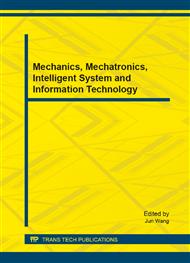p.998
p.1002
p.1021
p.1029
p.1037
p.1042
p.1046
p.1050
p.1053
The Research on the Long-Effect Mechanism of Industry-University-Research Cooperation Based on Swarm
Abstract:
The paper regards the speculative behavior in Industry-University-Research collaboration (IURC) as a process of principal-agent game with asymmetric information; establishes a dynamic model of the IURC with asymmetric information. And on this base we conduct simulation research combined with the reputation mechanism to reveal the forming process of mixed strategy between the two parities.
Info:
Periodical:
Pages:
1042-1045
Citation:
Online since:
August 2014
Authors:
Price:
Сopyright:
© 2014 Trans Tech Publications Ltd. All Rights Reserved
Share:
Citation:


